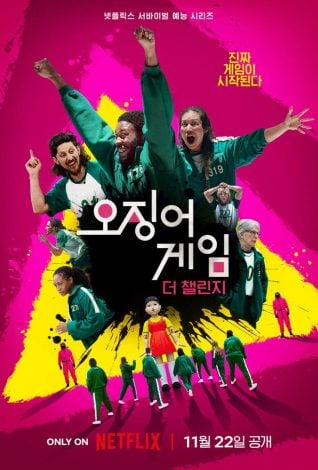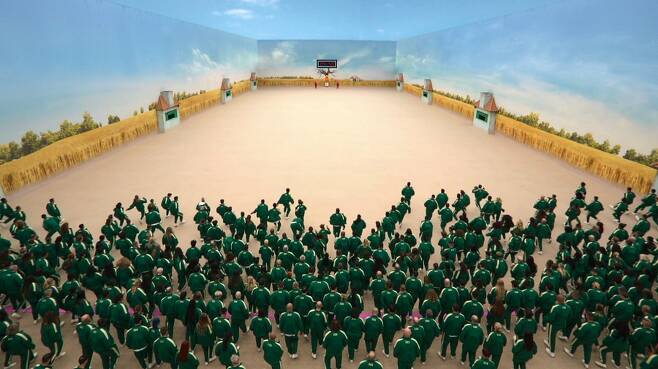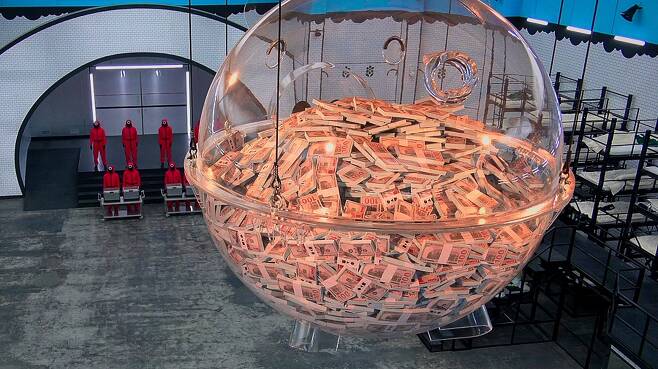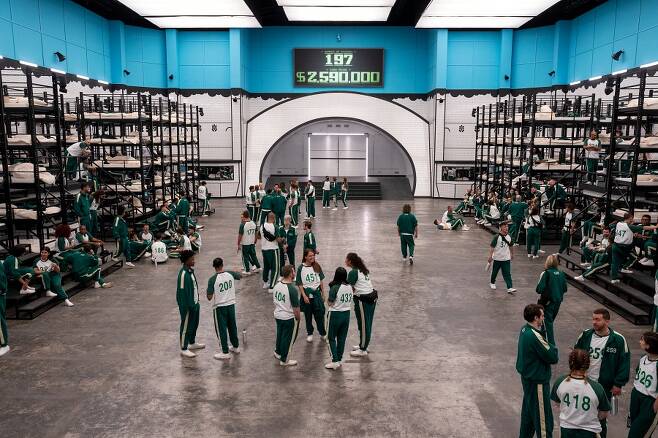“Squid Game” has been produced as a reality show and will be released on Netflix under the title “Squid Game: The Challenge”.
Upon its release in 2021, the K-drama “Squid Game” has truly become a global hit. Everyone around the world wore green tracksuits, played the “Red Light, Green Light” game, and ate dalgona candy. Not only that, but the original Korean series made history by entering and winning six awards at the PrimeTime Emmy Awards, the first for a K-Drama.

Inspired by “Squid Game,” a reality show with a prize of 4.56 million USD was created, where 456 participants competed. Recruited from around the world, participants over 21 years old who spoke English competed in games such as “Red Light, Green Light” and cutting dalgona candy on a gigantic set identical to the original “Squid Game.”
Titled “Squid Game: The Challenge”, the reality show version has since released an astonishing preview, where the set from “Squid Game” was faithfully reproduced.
The first game, “Red Light, Green Light,” took place in a vast space, where participants had to reach the finish line or be eliminated. The game’s progression, the way eliminations were displayed, and even the guidance through speakers were identical to “Squid Game.” Interestingly, when eliminated, participants fell as if shot, creating a dramatic effect with a special sound effect and a burst of air.

Throughout this game, participants’ subtle movements were monitored through a sophisticated automatic video system. To avoid controversy over the games and challenges shown in this show, qualified lawyers were chosen as judges.
The accommodation where they stayed was identical to the setting of “Squid Game.” Participants reacted with shock, cheers, and chills, just like the viewers. Unlike the CGI piggy bank in the original, the piggy bank in the show was produced in real life. In the final episode, the cash-filled transparent piggy bank hanging from the ceiling weighed over 800kg, evoking intense emotions for both players and viewers.
The narratives of characters like in the drama also emerged from the 456 participants, as individual stories were revealed through interviews.

Tasks and game progress in the accommodation conveyed the core messages of “Squid Game”: the morality, humanity, trust, alliance, and blatant betrayal of people. Despite being just a game, the reality show created an intense sense of immersion, with participants trembling and crying at the mere fact of being nominated for elimination.
Overall, this foreign version of “Squid Game” turned out to be more enjoyable than expected, making it compelling to watch. The traditional lunch boxes provided in the accommodation, with rice and fried eggs, were proudly presented. It’s impressive to see “Squid Game” enthusiasts among the participants pretending to know the rules and philosophy of the game.
It is known that the executive producer of the studio that created this work, 456 participants were selected after a staggering 81,000 applications were sifted through. According to the creative director, there is a need to blend likable and unlikable characters, in order to create morally complex aspects. However, despite the meticulous selection, once the game started, everything was beyond human control, and outstanding players were lost during the “Red Light, Green Light” game.
Intriguing Behind-the-scenes
It took three months to produce the Yeon-hee robot of “Red Light, Green Light”. Yeon-hee’s height was 4.2 meters, and robotic engineering design was used to accurately turn her head at a specific part of the song to stop, ensuring fairness to all participants. To select eliminated participants, an automatic video system, area-specific video scanning, and confirmation by more than 12 judges were used to quickly judge movements that violated the rules. The participant who passed the final within the shortest time took 2 hours, while the slower participants took 4 to 5 hours.

Meanwhile, making hundreds of dalgona candies turned out to be more challenging than expected. Traditional dalgona candies are sensitive to humidity and can break during transport, so the traditional recipe couldn’t be used. After 19 failed versions, they finally created dalgona snacks that were not easily broken and had a uniform depth.
To create an intriguing effect, when a participant is eliminated, the black ink fireworks inside their shirt expand. The reason for choosing black ink was to evoke the image of squid ink.

Even the tiles in the bathroom of the dormitory matched exactly with the original series, with 60,000 cream and blue-toned tiles.
Finally, it is known that the series was filmed for over 16 days in London. Once participants set foot inside the set, they couldn’t leave until they were eliminated. Only “Red Light, Green Light” was filmed in a different facility because the size of the studio was insufficient for the largest number of game participants.












